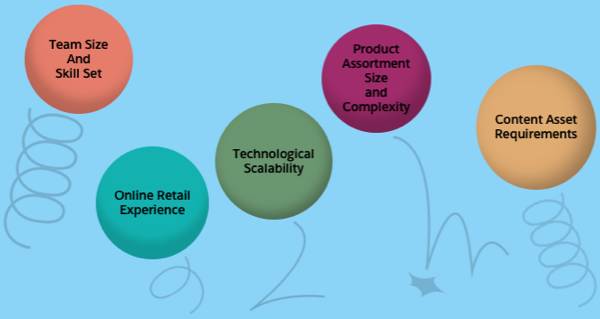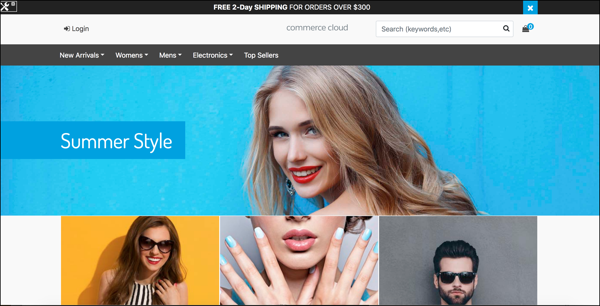Learn About the Functional Consulting Workflow
Learning Objectives
After completing this unit, you’ll be able to:
- List three steps in the functional consulting workflow.
- Explain what happens after site launch.
- List three ways that merchants are unique.
- Explain how the discovery process ensures solution usability.
- Describe four types of documents that are critical for this process.
- List three general architecture best practices.
Introduction
As a functional architect, you start at 10,000 feet and then work your way down, beginning with the customer contract. We’re talking about the Salesforce customer, or what we call in Salesforce B2C Commerce, the merchant. They want to sell better online, and you’re about to help them.
Your first step is to meet the players. It’s important to establish roles and identify tasks right at the start. Are you working solely with the merchant or are other partners involved? Who are your Salesforce contacts?

After the initial meeting, the workflow is as follows.
- Discovery: You collect merchant data.
- Design: You document requirements, design, settings, and so on.
- Development: Developers build the application.
- QA: The implementation team tests the application.
- User acceptance testing: The merchant tests the application.
- Go-Live: It’s time to celebrate!
Your job is to create documents, such as a project plan and functional specifications, and perform a gap analysis to identify what’s missing. As early as possible, you identify best practices and customization details. After the application is built and tested, you analyze launch readiness. After launch, you take another look. Does everything work? What new features does the merchant want to explore? What’s the plan going forward?
Let’s take a closer look at key steps in this process.
Client Discovery
During the client discovery phase, you learn as much as possible about the merchant (or client). The more details, the better, because at the end of the implementation, you hand them a solution that they’ll use to operate their business. The better you know what they want, the more likely they’ll get what they expect.
Though online retail has many cross-channel similarities, each merchant is unique in the following ways.
- Team size and skill set: Large merchants typically use a partner or have a more technical staff.
- Online retail experience: Experience ranges from first time to several years.
- Technological scalability: Technology can predict scalability.
- Product assortment size and complexity: Think chocolates, footwear, fabric, furniture, and apparel, each evoking a different product complexity.
- Content asset requirements: Book cover art, videos of models demonstrating footwear, and garden composting tips each have unique requirements.

Documentation
You collect and write documentation, and then analyze it for gaps. These are the most common documents.
| Document | Description |
|---|---|
| Project Plan | What must happen and when. |
| Operating on B2C Commerce Checklist | What must be in place for effective site operation both pre- and post-launch. Think of merchandising, operations and administration, and organizational roles. |
| Architectural Diagram | How do the different parts of the site interoperate? Think of B2C Commerce systems, LINK technology partners, and other third-party systems. |
| Data Model Spreadsheet | What’s the data model, especially category, product, customer, price books, and inventory data. Document early to prevent problems later. |
| Content Assets and Slots Inventory | Document content assets and content slots and assign IDs to them to reduce post-launch overhead, guide merchandisers in how to change content in the future, and ensure best practices are followed. |
| Integrations | List expected integrations in a summary section early after the discovery phase. |
| Functional Specification | Write the functional specification document (FSD), which contains the functional requirements for the project and how they translate into storefront behavior. |
Best Practices
In B2C Commerce, best practices are key to a smooth implementation. These are some of them.
General Architecture
General Architectural best practices are foundational. You need to know:
- When and how to use content slots
- Why it’s important to avoid iFrames
- How to support video content
- How to build the application for improved accessibility
- Use techniques that improve performance
- Separate business functions from code
Storefront
Storefront best practices ensure a fabulous shopper experience. It’s important to maintain tight control of product and content assets. Use both standard and storefront catalogs to support current and future business needs. Build site navigation to mirror the storefront catalog navigation. This ensures the maximum flexibility in controlling how categories display on the storefront.
The Data Model
The data model is a critical component of storefront design. It clearly depicts the data landscape necessary to support the merchant solution. Make sure its traceable to source systems and the project documentation, such as the functional specification. Because the data model organizes data in context of the object, it helps expose any potential manual data management a client must maintain. Is the manual process scalable? Does it make sense? These questions must be considered and resolved.
Admin Processes
Administration processes, though tailored to merchant requirements, should follow best practices to ensure a site’s smooth operation. Whether manual or scheduled, replication processes should always be clearly documented.
User Access and Roles
Merchants manage Business Manager access and privileges via roles. It’s best practice to discuss role management with the client based on job functions and not on convenience. For example, granting all users admin rights is a risky practice.
Mobile-First
The number-one best practice for mobile application design is mobile-first. Mobile-first designs for the smallest screen, and then works its way up. It’s one of the best strategies to create either a responsive or adaptive design. While responsive design adapts what’s on the screen based on the screen size, adaptive design detects the device and other features, and then provides the appropriate feature and layout based on a predefined set of viewport sizes and other characteristics. The Commerce Cloud Storefront Reference Architecture (SFRA) does all of this.
Internationalization
Internationalization is a B2C Commerce strength. B2C Commerce supports multiple localization requirements, such as:
- Local product assortment with specific country pricing and marketing
- Content in native languages
- Country-specific features (for example, payment methods)
Customization
B2C Commerce offers a fully customizable, extendable platform to meet varying merchant requirements. These requirements vary depending on vertical, locale, strategy, scale, and so on. Carefully consider the appropriateness of a customization against the platform, the product suite, and technology constraints. Just because you can technically perform a customization doesn’t mean you should. Just because you made a customization for one client doesn’t mean it will work for another.
Launch Readiness
Before launch you need to determine if the new application meets the documented requirements. The home page, cart, checkout billing, and product details pages, for example, must function as designed.

You also need to review Business Manager settings to ensure launch-critical items are complete. For example, is there a standard and storefront catalog? Are products in the storefront catalog assigned to categories? Are shipping methods configured and URL rules enabled? Have all the required locales been added?
Site launch should always be a celebration!

It’s time to celebrate!